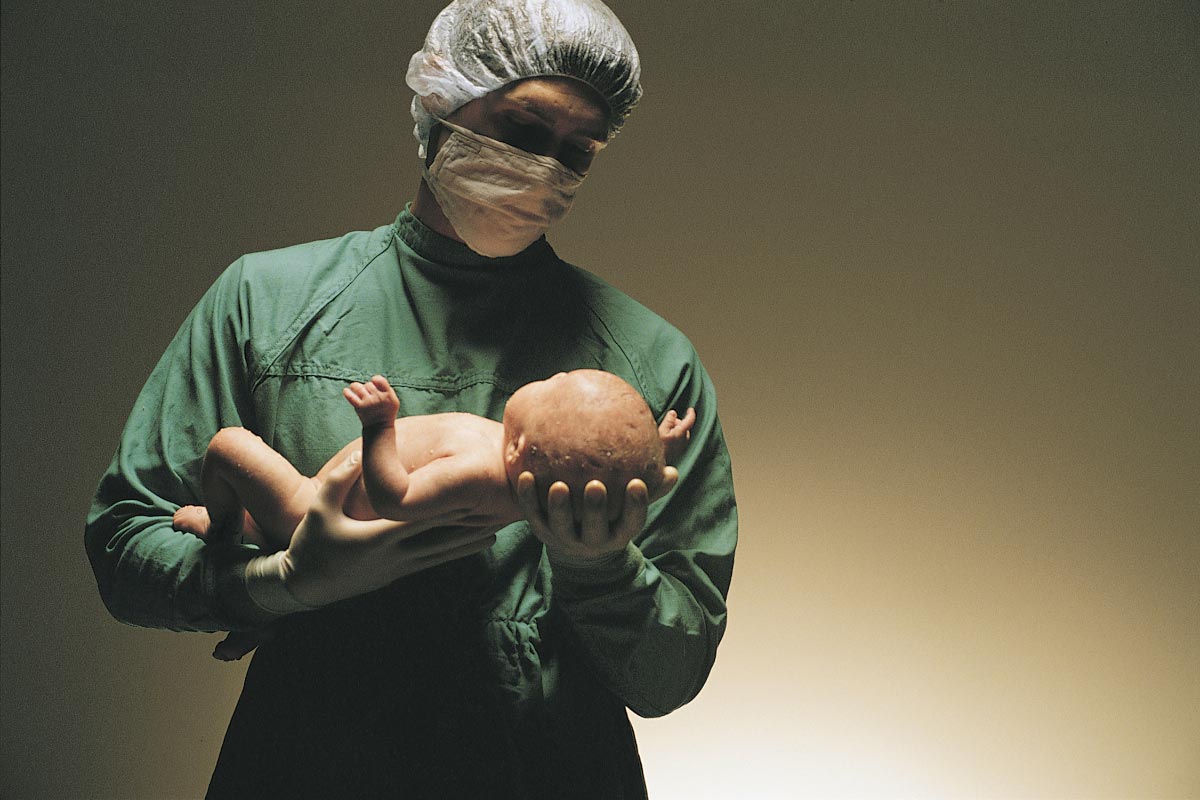 Parler
Parler Gab
Gab
One thing that parents worry about, or wonder about is, do I really need a vaccine if I’ve already had one or two doses? Do I really need to finish out the schedule, for example? Or maybe I’ve already been exposed to a virus or bacteria, so I don’t really need to even get vaccines at all. So instead, how about if I just have my blood tested to see whether or not I have a protective immune response already against that particular virus or bacteria.But, Offit argues, this is “not as easily done as you would think” because antibody titers are not necessarily indicative of immunity. He names the hepatitis B virus and the Haemohilus influenzae type B bacterium as examples of pathogens for which a certain quantity of antibodies in the blood is equivalent to immunity. This is not the case, however, for other pathogens, including the measles virus; rotavirus; and the pertussis bacterium, which causes whooping cough. With measles, having a certain antibody titer does correlate with immunity, but a lack of antibodies isn’t necessarily indicative of a lack of immunity. In Offit’s words (bold emphasis added):
However, there was an outbreak of measles in the late 1980s, early 1990s that swept through the United States that caused more than 50,000 hospitalizations and caused about 120, children mostly, to die from measles. When people looked back at that outbreak, you found that there were many people who had been vaccinated, but who didn’t have antibodies against measles who were still protected. The reason they were still protected is they had something called memory cells. Memory immunological cells, like B- and T-cells, which then when they were exposed to the virus became activated, differentiated, made antibodies, which then protected them. So even though they didn’t have circulating antibodies in their bloodstream, they still have these memory cells in their immune system that could then respond when they were exposed. So, if you looked at those people and saw they didn’t have antibodies, you would have falsely concluded they weren’t protected when they were.In short, just because someone doesn’t have a protective level of antibodies doesn’t necessarily mean that they aren’t immune. One can still be immune to a disease due to what is known as cell-mediated immunity, which is a different branch of the immune system from humoral, or antibody, immunity. Conversely, Offit continues (bold emphasis added):
Sometimes you can have antibodies in your bloodstream and not be protected. So, for example rotavirus or pertussis bacteria affect really just the mucosal surfaces. So, rotaviruses just infect the lining of the small intestine. Pertussis or whooping cough infects sort of the lining of the trachea or windpipe and the lungs. That virus and that bacteria don’t really spread into the bloodstream and cause a systemic infection. They’re so-called mucosal infections. So when you look at immunity in the bloodstream, that doesn’t necessarily predict whether or not there’s going to be adequate immunity at that mucosal surface.In short, just because someone has a high antibody titer doesn’t mean that they are immune. Cell-mediated immunity and mucosal immunity—or both—may also—or instead—be required to provide adequate protection against disease. Offit summarizes by saying that “titers are difficult” and “not a perfect predictor” of immunity, concluding that “the best way of knowing that you’re protected is to get the vaccines that are recommended at the time they are recommended.” Thus, Offit dismisses the idea of trying to avoid vaccination with a blood test as practically useless while characterizing vaccination as the best guarantee of immunity. But this argument is neither logically valid nor honest. Legitimate Concerns about Vaccine Safety Today, children vaccinated according to the CDC’s schedule will have received fifty doses of fourteen vaccines by the age of six. By the age of eighteen, children may may have received upwards of seventy-two doses of nineteen vaccines. As acknowledged by the Institute of Medicine in a 2013 report, no studies have been done to test the entire vaccination schedule to determine the long-term effects of the cumulative number of vaccines and their ingredients, which include the known neurotoxins aluminum and mercury. (Aluminum is used in some vaccines as an adjuvant, or a substance intended to provoke a stronger immune response, i.e., an increased level of antibodies. Mercury is used as a preservative. Specifically, the preservative thimerosal is about half ethylmercury by weight. It was included in numerous childhood vaccines until the turn of the century, when it was removed from most after it became publicly known that the CDC’s schedule was exposing children to cumulative levels of mercury that exceeded the government’s own safety guidelines. Multi-dose vials of the inactivated influenza vaccine, which is recommended for pregnant women and infants as young as six months, still contain thimerosal.) Naturally, the large number of vaccine doses and the lack of safety studies, coupled with alarming rates of chronic disease and developmental disorders among children, is a cause of concern for many parents. The idea that they should try to avoid unnecessary vaccinations is certainly a reasonable one. Yet in his response to these parents, not even the slightest effort is made by Offit to address the question of safety. That it’s safe to vaccinate children according to the CDC’s schedule, by his reasoning, is merely assumed. That, of course, is the fallacy of begging the question. But Offit’s fallacies don’t end there. Vaccine Failure To strengthen his characterization of vaccines as the best guarantee of immunity, Offit highlights cases in which vaccinated individuals did not have a protective antibody titer and yet were still immune to measles. Naturally, he doesn’t mention that the outbreak he speaks of was to a much greater extent characterized by large numbers of children who were vaccinated and yet who still got measles. Bringing up the phenomenon known as “vaccine failure” just wouldn’t do, given his purpose of persuading parents to vaccinate their children strictly according to the CDC’s schedule. In fact, during the mid to late 1980s, about 40 percent of measles cases were occurring in vaccinated schoolchildren, according to a study published in the journal of the American Medical Association, JAMA, in 1990. Most of these cases were attributed to what is known as “primary vaccine failure”, which refers to the failure of the vaccine to confer immunity. Another possible explanation was “secondary vaccine failure”, which refers to the waning effect of vaccine-conferred immunity. For outbreaks occurring in the year 1989, according to a paper published in Clinical Microbiology Reviews in 1995, “Approximately 80% of the affected school-age children were appropriately vaccinated.” As prior studies had shown, “epidemics of measles can be sustained in school-age populations despite their having very high vaccination rates.” Among the explanations for this were both primary and secondary vaccine failure. Until that time, a single dose of measles vaccine was recommended for children by the CDC, to be administered between the ages of twelve and fifteen months. It was precisely because measles outbreaks were occurring in highly vaccinated populations, however, that the CDC’s Advisory Committee on Immunization Practices (ACIP) began considering adding a second dose to the schedule, to be administered between the ages of four and six years. As the CDC itself explains in its Morbidity and Mortality Weekly Report (MMWR) of June 14, 2013, “measles outbreaks among school-aged children who had received 1 dose of measles vaccine prompted ACIP in 1989 to recommend that all children receive 2 doses of measles-containing vaccine, preferably as MMR vaccine.” Moreover, the CDC openly acknowledges that for most children who’ve received the first dose of measles vaccine, the second dose is unnecessary. In the CDC’s own words (with my bold emphasis), “The second dose of measles-containing vaccine primarily was intended to induce immunity in the small percentage of persons who did not seroconvert after vaccination with the first dose of vaccine (primary vaccine failure).” Offit’s argument is that since a negative antibody titer after the first dose is not necessarily indicative of a lack of immunity, therefore parents should just go ahead and get their child the second dose, too. But that argument doesn’t make any sense. It’s a non sequitur fallacy. The conclusion simply does not follow from the premise. Rather, the conclusion that follows, in the case of the measles vaccine, is that parents who think that the second dose might provide no additional benefit and would hence pose an unnecessary risk for their child are probably correct in their assessment. Read more at: JeremyRHammond.com
Secretary Kennedy shuts down $500 million in BARDA mRNA vaccine contracts
By Lance D Johnson // Share
Hospital hid evidence tying COVID vaccines to STILLBIRTH SURGE, nurse’s lawsuit claims
By Lance D Johnson // Share
Governments continue to obscure COVID-19 vaccine data amid rising concerns over excess deaths
By patricklewis // Share
Tech giant Microsoft backs EXTINCTION with its support of carbon capture programs
By ramontomeydw // Share
Germany to resume arms exports to Israel despite repeated ceasefire violations
By isabelle // Share










